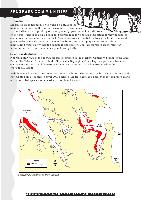Please use this identifier to cite or link to this item:
https://hdl.handle.net/11017/936

Full metadata record
| DC Field | Value | Language |
|---|---|---|
| dc.date.accessioned | 2012-10-30T05:47:30Z | null |
| dc.date.available | 2012-10-30T05:47:30Z | null |
| dc.date.copyright | 1998 | en |
| dc.date.issued | 1998 | en-US |
| dc.identifier.uri | https://hdl.handle.net/11017/936 | null |
| dc.description.abstract | Seagrass is an angiosperm, or flowering plant, adapted to living submerged in the marine environment. Seagrasses are most diverse in tropical regions and generally grow in the intertidal zone on soft substrates such as mud or sand. Seagrass meadows provide important nursery habitat for commercial species of prawns and fish. Seagrasses are an essential foodresource for dugongs and green turtles. They also act as nutrient and sediment sinks and play an important role in maintaining water clarity through sediment stabilisation. Coastal seagrasses are therefore an important resource both economically and ecologically. | en |
| dc.publisher | Great Barrier Reef Marine Park Authority | en |
| dc.relation.ispartofseries | Gumoo Woojabuddee Section Fact sheets | en |
| dc.title | Gumoo Woojabuddee Section Fact sheets: Seagrass communities | en |
| dc.type | Brochure | * |
| dc.subject.asfa | Seagrass | en |
| dc.subject.asfa | Nursery grounds | en |
| dc.format.pages | 3 | en |
| dc.contributor.corpauthor | Great Barrier Reef Marine Park Authority | en |
| dc.subject.apais | Conservation (Natural resources) | en |
| dc.subject.apais | Ecology | en |
| dc.publisher.place | Townsville | en |
| dc.subject.collection | People and the Reef | en |
| dc.relation.connectiontogbrmpa | GBRMPA published this item | en |
| dc.subject.category | Plants | en |
| dc.subject.category | Ecosystems | en |
| Appears in Collections: | Community | |
Files in This Item:
| File | Description | Size | Format | |
|---|---|---|---|---|
| seagrass.pdf | 332.81 kB | Adobe PDF |  View/Open |
Items in ELibrary are protected by copyright, with all rights reserved, unless otherwise indicated.
